Selecting a Blade for Self-Defense Is More Than Just Choosing the Right Steel
It’s almost like clockwork. Whenever I teach a knife-related combatives class or seminar, a new student will inevitably ask me, “What’s the best knife for self-defense?” I usually go with the classic retort: “The one in my hand.”
All jokes aside, though, if I’m talking about a knife to protect myself and my loved ones, the best blade will need to be the one that I can carry safely, access quickly, and use effectively.
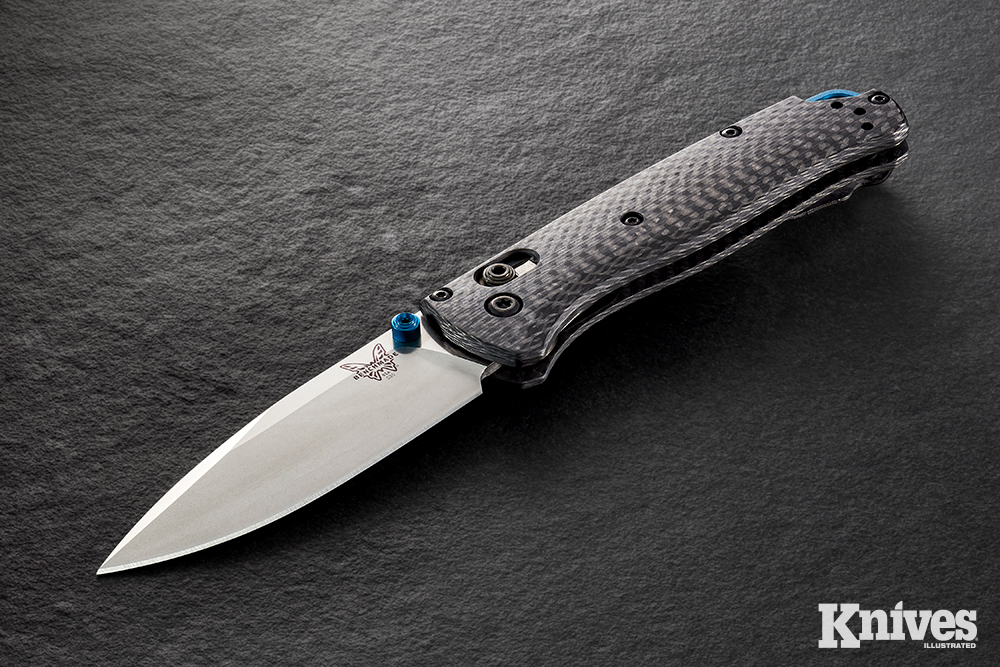
If you’ve never considered all of these other factors when choosing a defensive knife, read on as we take a stab at a deep subject. You might just find out something about yourself that you had never considered before when it comes to your everyday-carry (EDC) gear.
So, here are six steps every knife enthusiast should consider before choosing an edged weapon for self-defense:
Step 1: Establish Your Mindset
Before we even get to the question of what hardware you should hold in your hand, we’re going to focus on the software that runs in your head.
Simply put, you need to ask yourself, “Am I willing to inflict serious (and potentially fatal) injuries to another human being if I’m forced to defend myself?”
“…the best blade will need to be the one that I can carry safely, access quickly, and use effectively.”
A knife is not a toy. It’s not something you draw to look cool. A self-defense knife is a lethal weapon that can extinguish life. So, once you acknowledge that fact, you have to be comfortable with the idea that you might have to use it to do serious bodily harm—and live with the consequences, be they legal, moral, ethical, or financial.
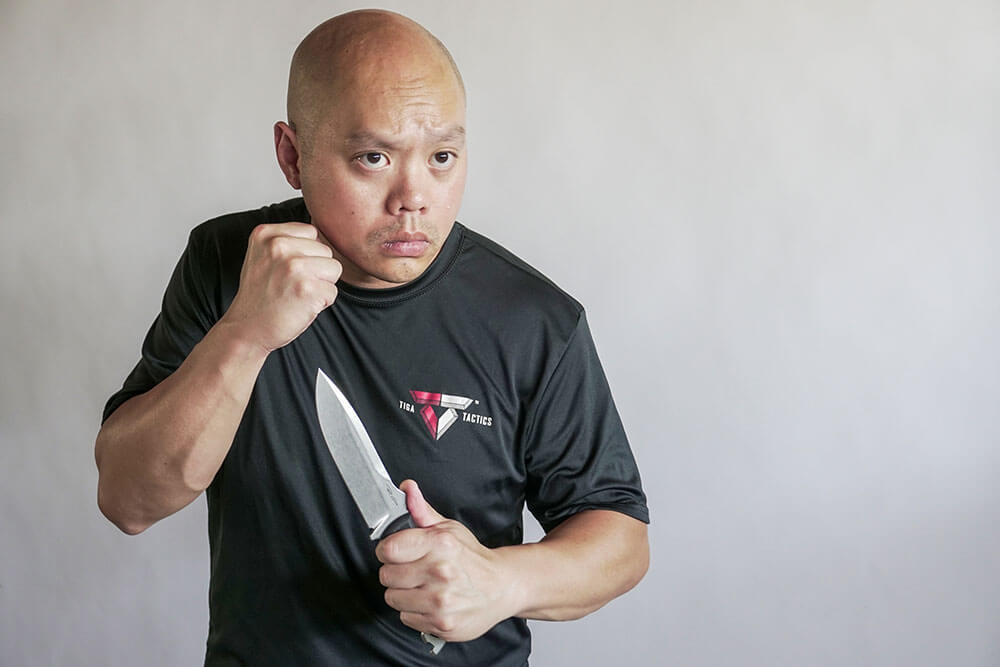
If you’re not comfortable with that, then there’s no point in even carrying a knife for self-defense, because it’s unlikely you’ll be able to draw one—let alone use it properly—in the heart-pounding, adrenaline-filled stress of a life-and-death situation.
Of course, there’s absolutely nothing wrong with not wanting to inflict harm with a knife. Just be certain you have other tools—namely empty-hand combatives and less-lethal tools such as OC spray or tactical flashlight—to deal with threats to your life.
STEP 2: Do Your Legal Homework
The next question to ask yourself is, “What knife can I legally carry in the areas where I live, work, and play?”
It’s pointless to buy an out-the-front automatic knife with a spear-point blade profile if auto knives are prohibited in your region.
While you might win the physical fight against a bad guy, you might not be so lucky in a court battle against an overzealous prosecutor or a civil lawsuit. And there’s no telling how much you’d have to pay in legal fees to wage such a legal war.
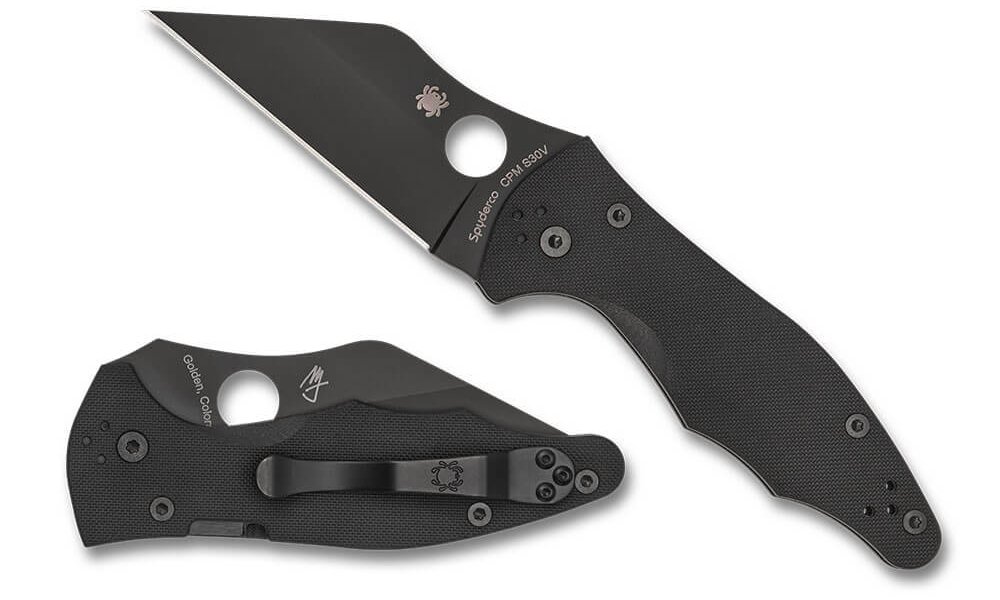
Save yourself future heartache by researching the laws in your city, county, state/province, and country. Read them carefully and consult with an attorney if you have the opportunity.
Some knife codes can be straightforward while others are murky at best. Do your homework ahead of time and carry responsibly no matter where you go.
STEP 3: Choose Fixed or Folding Blade
One of the most common knife-fight fallacies is the myth of having enough time and space. Do you believe that, when feces hits the fan, you’ll have both the time and the distance to spot the threat, pull out your folding knife, open the blade quickly, regrip your handle, and get your weapon into play before a violent psycho can hurt you?
Well, guess what? A sociopathic gangster would have gutted you in just a quarter of the time it took you to read that last sentence. That’s how fast real violence can occur.
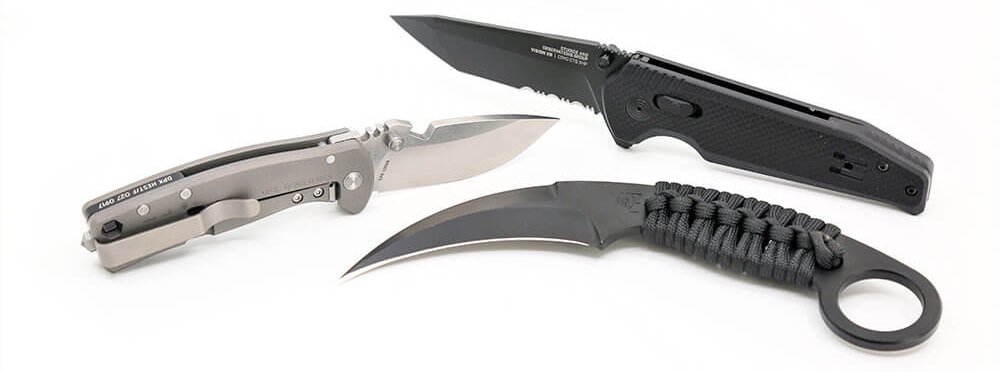
So, if self-defense is your priority, go with a fixed blade. It’s a much faster option than a folding knife. It has no safety to disengage or thumb-stud to push open. It has no moving parts, so there’s a lower chance of failure. Simply draw the knife from your sheath and it is immediately “live.”
If carrying concealed is allowed and blade length isn’t an issue, get the longest fixed knife you can carry that doesn’t “print” underneath your clothes. For many, that will mean selecting a small- to medium-sized knife with a slim handle and blade.
“…if self-defense is your priority, go with a fixed blade. It’s a much faster option than a folding knife.”
While some self-defense instructors advocate open-carry as a visual deterrent, I’ve never prescribed to that strategy. Why give a bad guy the advantage of seeing what you have and where? And why attract unwanted attention (from both cops and crooks) in the first place?
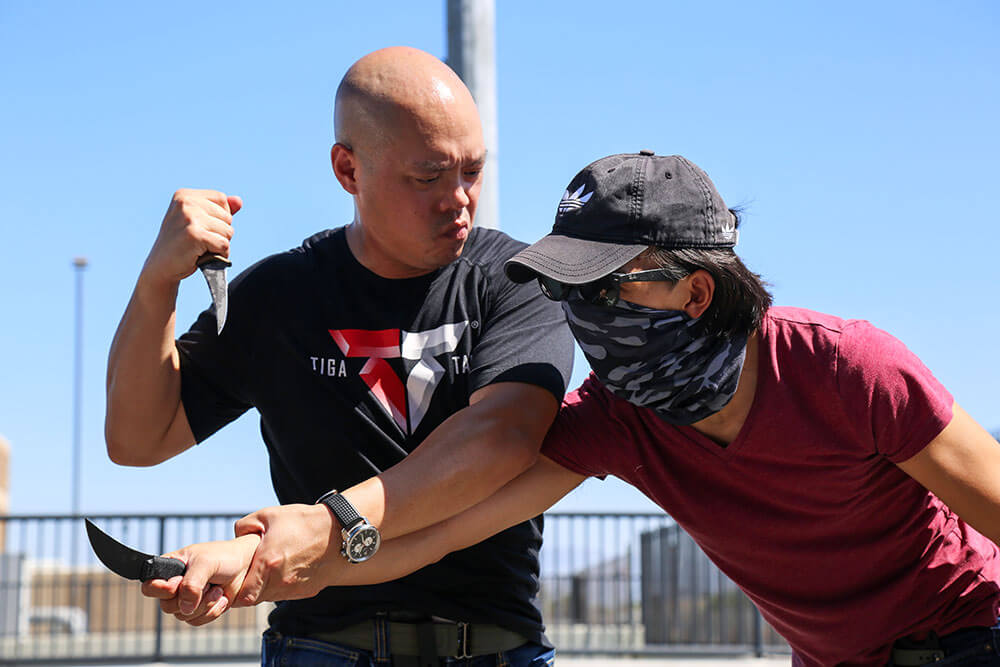
So, if a concealed fixed blade isn’t legal in your area, get a reliable folding knife with a foolproof opening mechanism that is permissible in your jurisdiction. The choice of that opening mechanism is certainly open to debate.
I know some knife knuts who live in “free” states such as Arizona who carry nothing but automatic knives. I’m friends with folks who say a spring-assisted folder has all the benefits of a switchblade but none of the legal drawbacks.
And I’ve trained with police officers who swear by pocket-deploy knives (think Emerson Knives’ Wave Feature).
My selection changes based on where I’m going and why. But generally, I choose a folding knife with two reliable opening methods just in case the first fails. For example, a thumbhole and a flipper tab, or a thumb-disc and a pocket-deploy hook.
DISCLAIMER
This article is for informational purposes only and not to be construed as instruction or legal/medical advice. Consult with a reputable instructor, lawyer, and physician prior to any training.
STEP 4: Choose Your Blade Profile
The human body is soft and fragile; almost any blade can do damage to it. Don’t believe me? Apparently, you’ve never suffered a paper cut in your life. In all seriousness, a butter knife can be lethal in the hands of a determined killer.
Still, you want an efficient blade profile with the most stopping power. And that almost always comes down to a blade with a pointy tip and a straight cutting edge.
The former ensures deeper penetration for internal damage (e.g., piercing lungs or heart, etc.) while the latter is effective at structural damage (i.e., severing muscles, tendons, and arteries).
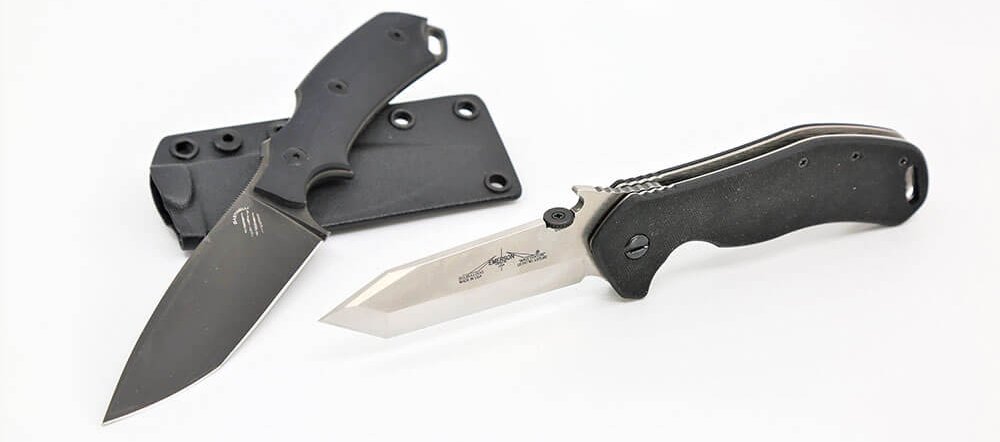
While there is at least a half dozen blade shapes that can be fatally efficient, here are three that I recommend for self-defense:
Drop-Point: This blade profile gets its name from the way its straight spine drops down toward the point. The cutting edge is straight until it sweeps up to meet the spine, forming a sturdy tip. This makes it excellent for thrusts, while the straight cutting edge is long enough (even on short folders) for effective slashes. Quite vicious, but also versatile for EDC tasks.
Tanto: While this is more of an American reimagining than an accurate representation of the eponymous Samurai dagger, the tanto is known for its strong tip for stabbing and straight edge for slicing. Just keep in mind that, because of the obtuse angle from cutting edge to tip, the tanto is less versatile for utilitarian tasks.
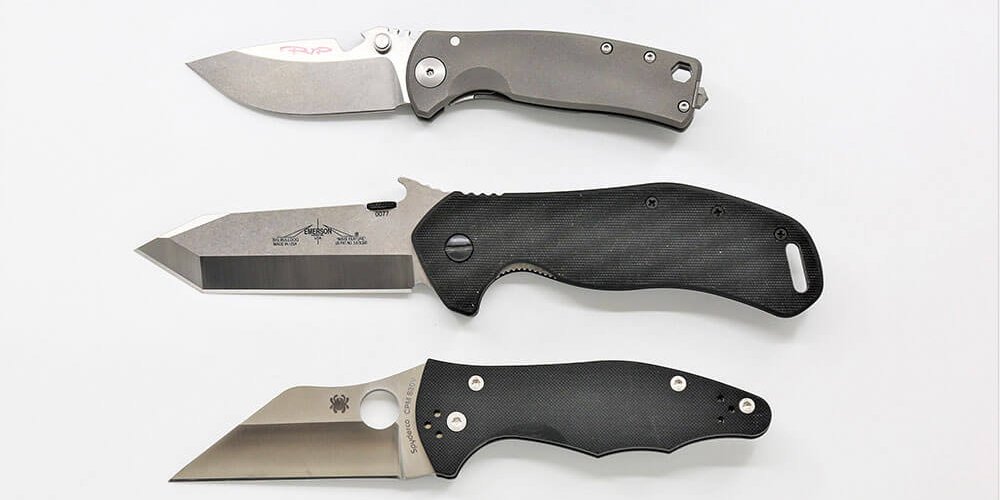
Wharncliffe: I recommend a modernized version of this blade shape like the Spyderco Yojimbo 2. This has a perfectly straight cutting edge and an extremely pointy tip. With all things being equal, the Wharncliffe provides the deepest and most precise slashes in a self-defense situation—it maintains constant pressure on flesh whereas, say, a trailing-point blade curves away from a body part as you follow through. This makes the Wharncliffe an excellent option for fighting, though it is a little less versatile for EDC tasks.
Generally speaking, you’ll want to stay away from knife shapes that are overly curved (e.g., hawkbill), lack a prominent tip (cleaver style), or have a lot of serrations (there’s a reason the Samurai and the medieval knights never had sawtooth edges on their swords!).
STEP 5: Choose Your Blade Material
In recent years it’s been quite trendy to make self-defense weapons out of space-age materials. I’ve had the pleasure of reviewing polymer dirks, carbon fiber folders, and G10 fixed blades.
And as cool as those materials are, a good knife blade they do not make. While they’re razor sharp out of the box, they have poor edge retention and can dull, dent, or crack—sometimes even after just one use.
Second, if you ever have to use one to defend yourself, you’re gonna have to explain to law enforcement why you were carrying a weapon that has limited utilitarian use yet can sneak past metal detectors.

Instead, stick to steel. We can group steel blades into two categories: stainless and non-stainless. (Metallurgists everywhere will curse me for saying that, but I’m intentionally simplifying it for the purposes of choosing a self-defense knife.)
Non-stainless like 01 tool steel, 5160 spring steel, and 1095 carbon steel offer toughness, wear resistance, and edge retention. That’s why they’re ideal for larger tools like machetes. But the major drawback is that they are prone to rusting without regular maintenance. That’s why I’m a big advocate for stainless-steel knives. They offer the best balance of strength, sharpness, and corrosion resistance.
Here’s a look at some reliable steels at three price points:
Budget Stainless: Stay away from 8Cr13MoV—unless it’s used by Kershaw Knives. I’m not sure what black magic it’s using, but Kershaw Knives takes that cheap steel and produces knives that are reliable, functional, and affordable. Otherwise, look for blade steels such as U.S.-made 440C, AUS-8 from Japan, or 14C28N produced in Sweden. Knives made from these materials can usually be found for less than $50.
Mid-Range Stainless: Here’s the Goldilocks zone. You’ll find good blades that are sharp, strong, and corrosion-resistant for reasonable prices that won’t burn a hole through your wallet. 154CM has a near perfect balance of toughness, wear resistance, and corrosion resistance. Plus, it’s easy to sharpen. While many companies use this material, for a long time almost every blade made by Emerson Knives consisted of only 154CM.
N690 is a ubiquitous in Europe because it’s strong, easy to hone, and can fight off rust something fierce. Spyderco Knives popularized VG-10, and for good reason. Like a Toyota, VG-10 is a high-quality, durable, and reliable export from Japan.
Premium Stainless: This range of blade steels can instantly jack up the price of a $50 knife to well beyond the $250 mark. Are these steels necessary to defend your life in a violent situation? No. But if money were no object, then look at blades made of CPM-154, CTS-XHP, S30V, or S35VN.
ABOUT THE AUTHOR
Patrick Vuong is a lifelong knife knut, a writer/journalist, and the co-founder of Tiga Tactics (a combatives training company). As a self-defense teacher since 1999, he uses his diverse knowledge of fighting methods to close the wide gap between two traditionally separate warriors: martial artists and firearms enthusiasts.
He’s an instructor in several systems, including the Filipino bladed art of Pekiti-Tirsia Kali. For more information, go to TigaTactics.com.
STEP 6: Choose Your Handle Material
Just as important as the business end of a knife is the backend, if not more so. After all, if you can’t find purchase on the grip as you go to draw, you won’t get it out in time. Or perhaps you do get it out of your pocket, but the handle is so slippery that you drop the knife.
“…selecting a knife for self-defense can be a time-consuming and highly personalized affair. What one person loves another person loathes.”
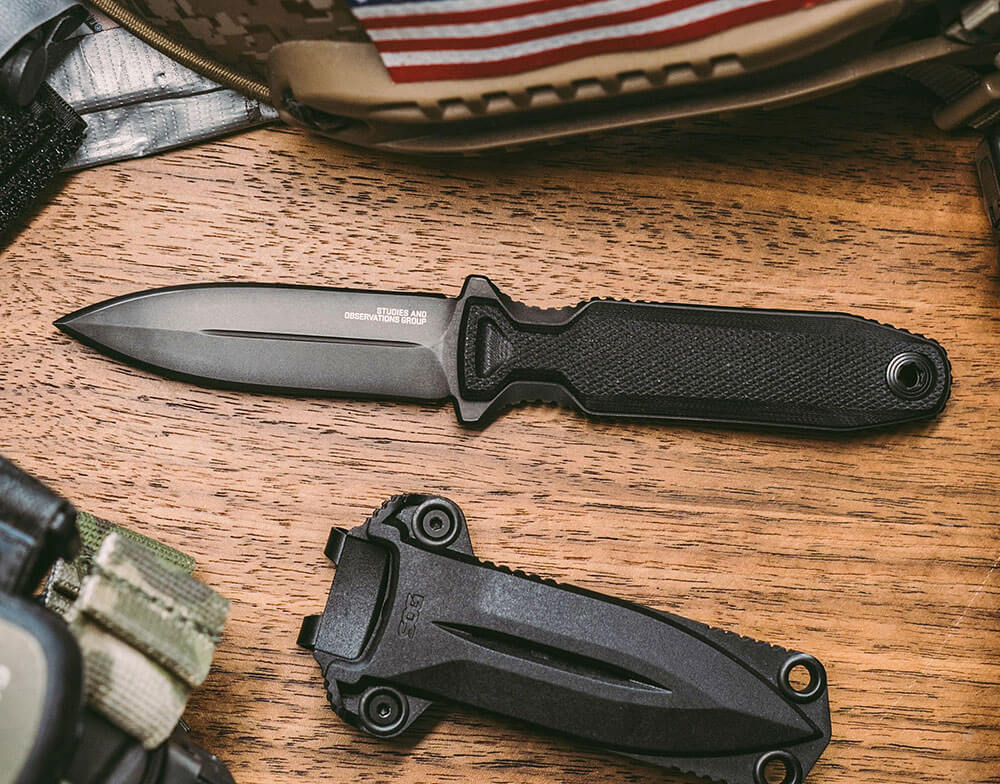
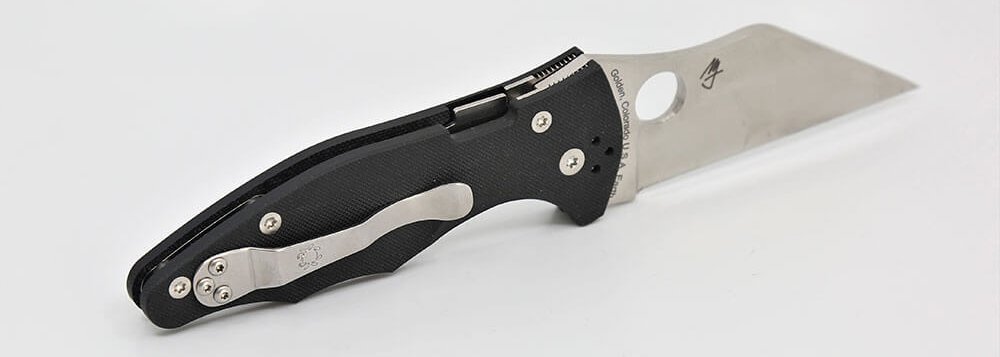
There are many options for handle materials, but here are three handle scales that I recommend:
FRN: Also known as fiberglass-reinforced nylon or glass-filled nylon, these polymer handle scales are the low cost but reliable option. They’re strong, lightweight, and textured in almost any way to enhance traction. They do have a cheap plasticky feeling, though.
G10: It’s a fiberglass laminate composite that offers great strength-to-weight ratio while also being resistant to moisture, temperature, and chemicals. It can also be textured in a variety of ways, ensuring your knife manipulations are secured regardless if your hands are wet, sweaty, or bloody.
Micarta: Similar to G10, this is a pressed laminate (made usually of paper or cloth) that’s dried in resin. The result is a classy looking material that’s light, strong, and durable. It’s not as grippy as G10, but you’ll still get an assured grip with a Micarta handle.
SOURCES
Bastinelli Knives, BastinelliKnives.com
DPx Gear, DPXGear.com
Emerson Knives, EmersonKnives.com
Keen Edge Knives, KeenEdgeKnives.com
Kershaw Knives, KershawKnives.com
Lerch Knives, Instagram.com/LerchKnives
SOG Specialty Knives & Tools, SOGKnives.com
Spyderco Knives, Spyderco.com
CUTTING TO THE HEART OF IT
Much like choosing a spouse or a meal from Cheesecake Factory’s 50-page menu, selecting a knife for self-defense can be a time-consuming and highly personalized affair. What one person loves another person loathes. It’s not really about choosing the right knife. It’s about choosing the knife that’s right for you.
Hopefully following these six steps will help shorten that process and get you on your way to finding your ideal edged weapon. Because at the end of the day, the only thing that matters is using the knife that’s in your hand so you can get home safely to your family.
Editor’s note: A version of this article first appeared in the May/June 2021 print issue of Knives Illustrated.

